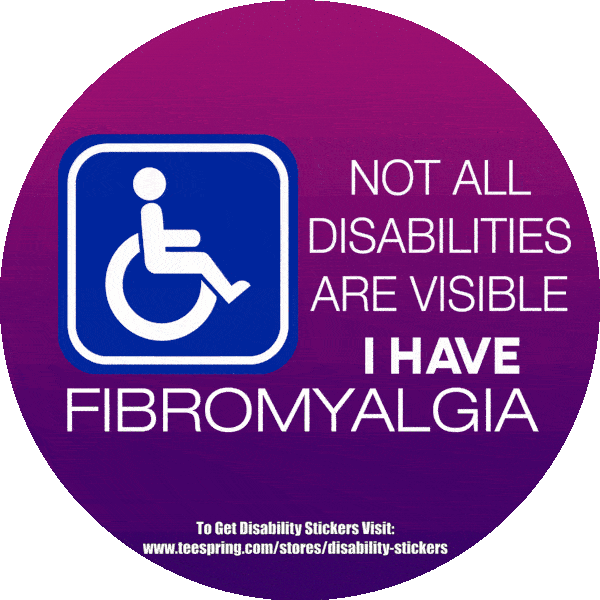Living with Muscle Spasms
While you may not be able to eradicate muscle spasms, you have a great deal of treatment and managing options that may help you feel and function well. As always, talk to your doctor, experiment with a variety of harmless treatments, and keep doing what works. Muscle spasms can be a source of considerable pain in many people with fibromyalgia and chronic fatigue syndrome. Our muscles clench and just won’t relax, sometimes in spite of multiple treatments. These conditions often show up alongside others, like irritable bowel and irritable bladder syndromes, which involve smooth muscle spasm. I almost always have muscles in spasm, mostly in my neck, lower back, and hips. Taut, hard, painful muscles can keep me awake and limit my activity significantly. In addition to the constant ones, I get them randomly around my body. They can hit out of the blue, too. I can’t count how many times I’ve been in the middle of something and feeling fine, only to be sidelined by a sudden muscle spasm. It can happen while I’m walking, sitting, or lying down and I haven’t found any way to predict them. I’ve heard enough stories from other people with these conditions that I know I’m not alone. So what can we do about it?
Treating Muscle Spasms
The most common treatment for muscle spasms is muscle relaxants such as Flexeril (cyclobenzaprine). In my personal experience, it keeps things from getting too bad, but it’s certainly not a complete fix. Some supplements are assumed to help with muscle spasms, containing:
- Calcium,
- Malic acid,
- B vitamins,
- Magnesium,
- Zinc,
As usual with supplements, we don’t have solid evidence that they’re effective and there’s little to no research on them specifically for fibromyalgia or chronic fatigue syndrome. Some people get relief from:
- Massage, especially myofascial release,
- Acupuncture,
- Trigger point injections,
- Cupping,
- Physical therapy.
There is a lot you can do at home as well, like:
- Massage devices,
- Ice,
- Heat,
- Topical muscle creams/patches,
- Stretching, yoga, tai chi.
Many of these treatments can have effects on other symptoms as well.
What Causes Muscle Spasms?
Researchers haven’t gotten to the root of our muscle spasms yet. However, we do have some studies showing a link to myofascial trigger points. (These are different from the tender points used to diagnose fibromyalgia.) Trigger points (TrPs) are small, ropy bands of muscle tissue that are in constant spasm but can get better or worse at times. They generally result from and injury that doesn’t heal properly. Someone with chronic pain from multiple TrPs may have myofascial pain syndrome, a condition that’s strongly linked to fibromyalgia. An important characteristic of TrPs is that they can cause referred pain. In other words, they cause pain away from where they are, so an active trigger point in your neck may cause what feels like sinus pain around your eyes. (Trust me on this one. I know it well!) So when a doctor looks at where it hurts, there is nothing wrong. Sound familiar? In one study, researchers were able to recreate the seemingly random pain of fibromyalgia by manipulating TrPs. That suggests that at least some of our pain may be caused by TrPs. The good news there is that TrPs can be treated and even gotten rid of. You can learn more about that here:
- Myofascial Pain Syndrome in FM
Another possible cause of muscle spasms is our dysfunctional nervous systems. It’s possible that our nerves send signals improperly and cause twitches or spasms. As I’ve learned more about these conditions and how the human body works in general, I’ve come across a couple of things that, taken together, make sense. At least to me. We don’t have any research on this that I can find, so these are just my own musings. Did you know that it takes more energy for a muscle to relax than to contract? In fact, it takes twice as much. Weird, eh? Here’s how it works:
- When energy is low, the cell can’t perform that job and the muscle stays contracted.
- For the muscle to relax, the cell needs to pump the calcium back into the pouch.
- When a muscle contracts, small pouches in the cells release calcium.
Given the energy deficits of chronic fatigue syndrome and fibromyalgia, I cannot help but wonder if there is a connection. More and more, researchers are looking at how our cells and the mitochondria within them function. The theory that our illnesses involve mitochondrial dysfunction is becoming more accepted. So is something misfiring in the minuscule parts of cells that doesn’t allow our muscles to un-clench? According to some research, supplements that can increase cellular energy and mitochondrial function include:
- Carnitine,
- Magnesium,
- B-12,
- D-ribose,
- CoQ10,
(You wll notice that magnesium and B-12 are also listed as helping with muscle spasms.) Sources: Ge HY, et al. Arthritis research & therapy. 2011 Mar 22;13(2):R48. Reproduction of overall spontaneous pain pattern by manual stimulation of active myofascial trigger points in fibromyalgia patients. Gur A, et al. Lasers in medical science. 2002;17(1):57-61. Efficacy of low power laser therapy in fibromyalgia: a single-blind, placebo-controlled trial. Ruaro JA, et al. Lasers in medical science. 2014 Nov;29(6):1815-9. Low-level laser therapy to treat fibromyalgia. Vayvay ES, et al. Journal of back and musculoskeletal rehabilitation. 2016 Jan 25;29(1):77-83. The effect of Laser and taping on pain, functional status and quality of life in patients with fibromyalgia syndrome: A placebo- randomized controlled clinical trial. Reference: By Adrienne Dellwo via Very well
